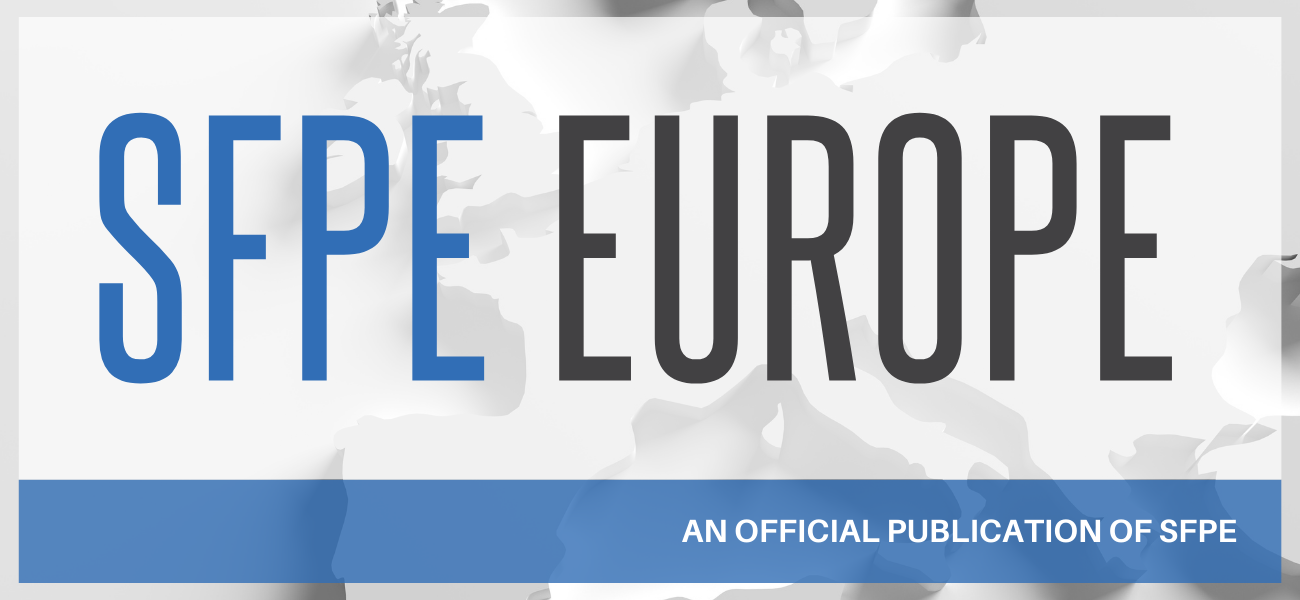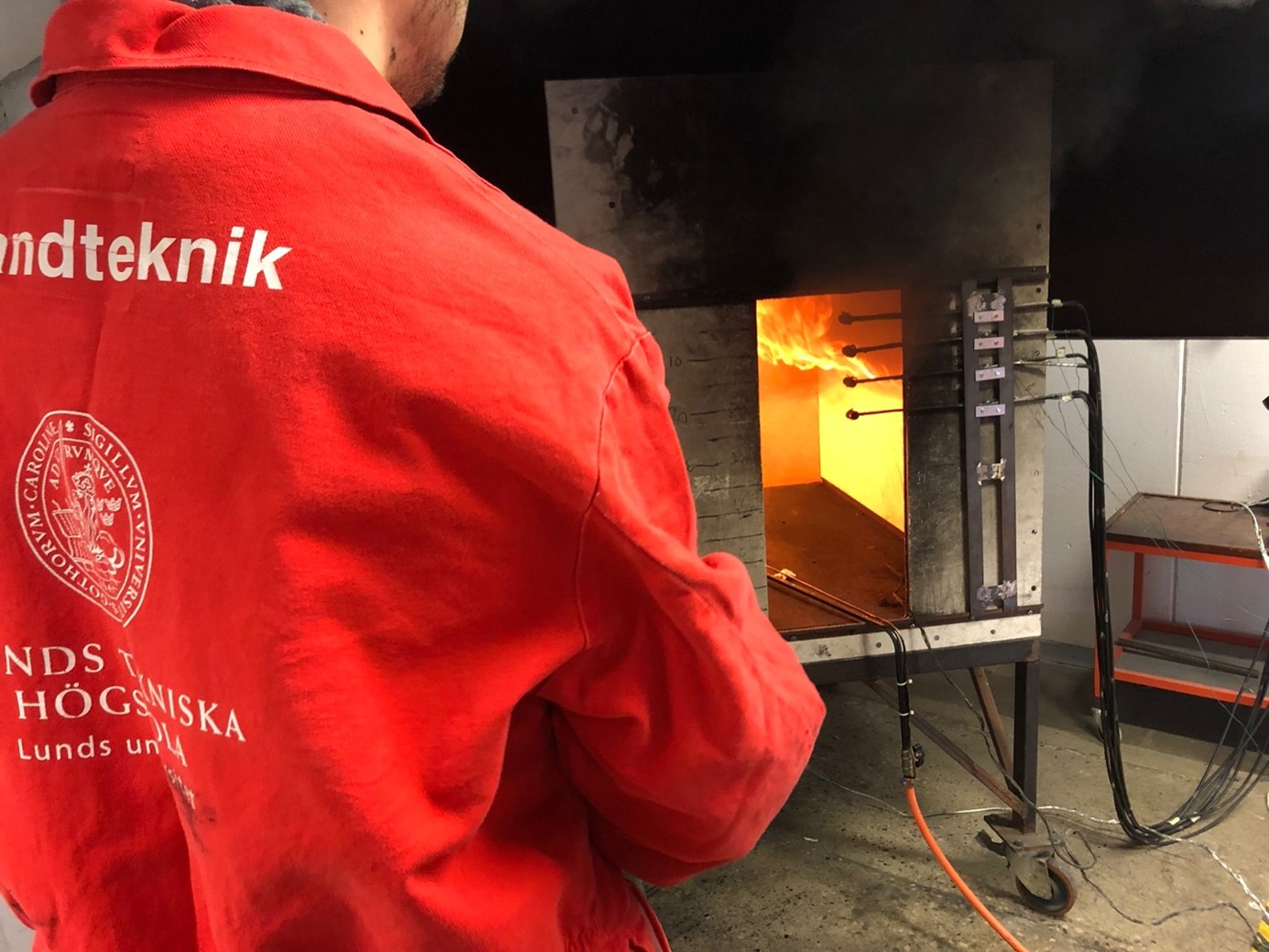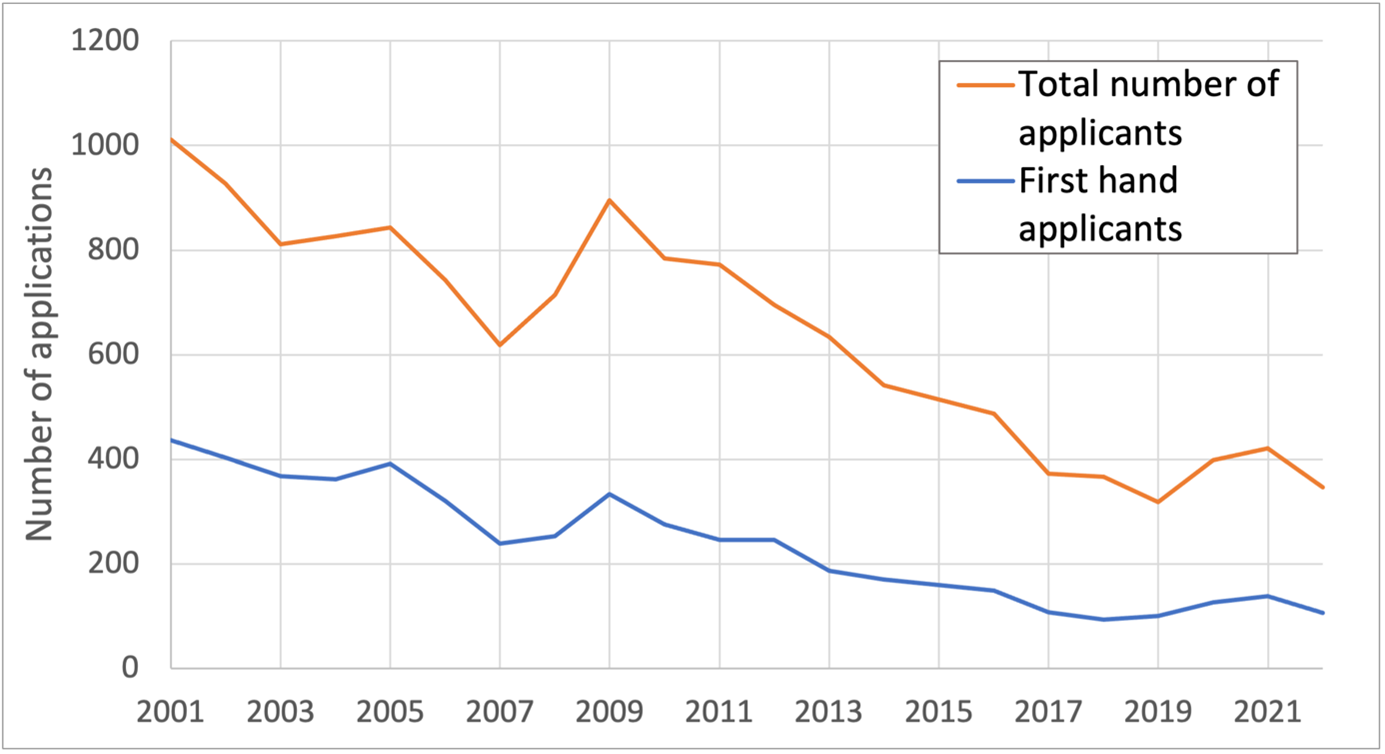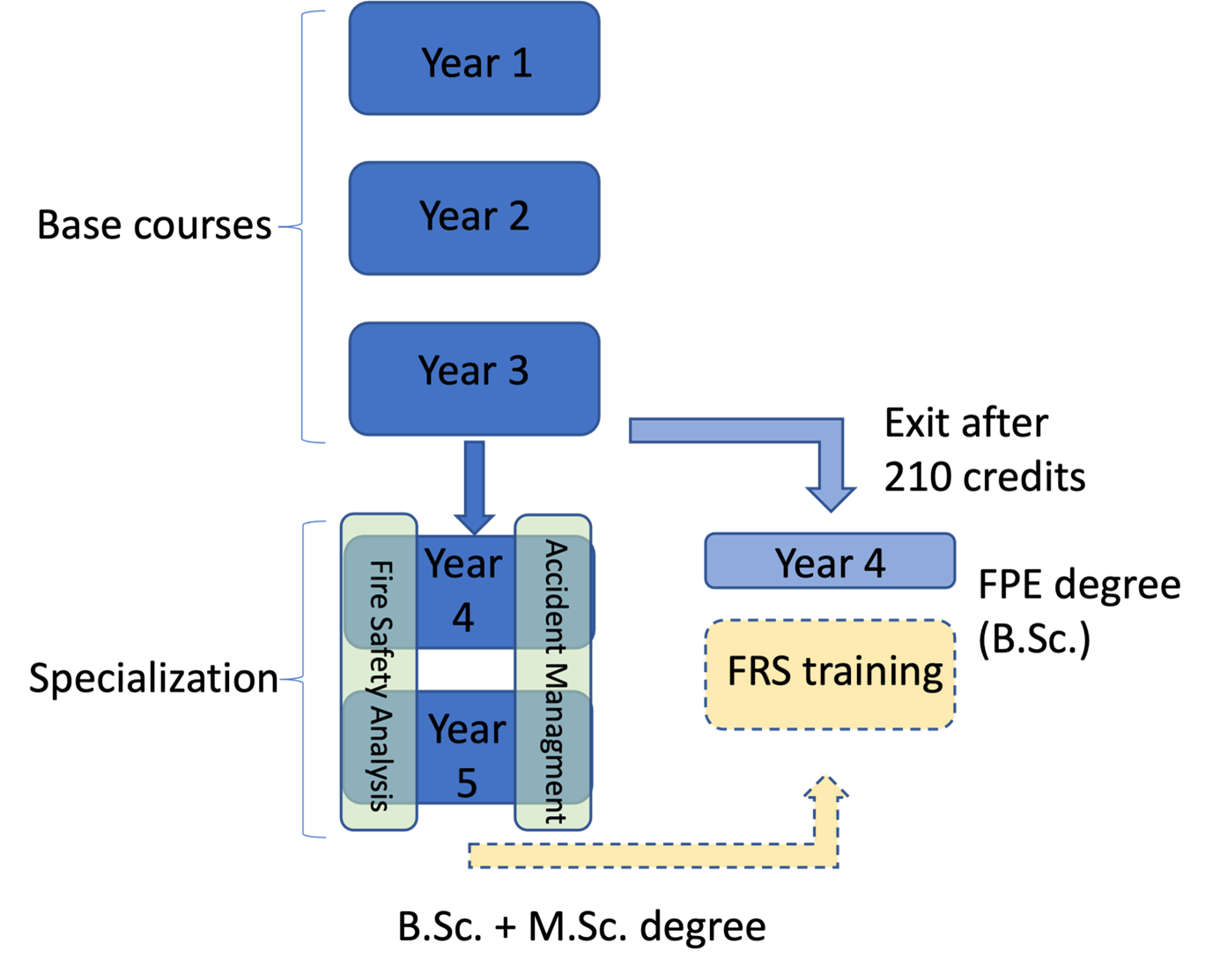
View the PDF here
Adapting Fire Engineering Education for Evolving Societal Challenges and Emerging Risks
A new five-year master’s program in Fire Safety Engineering starts this autumn at Lund University (LU). It is a natural progression from the current Fire Protection Engineering program, based on changes in societal needs and advancements in the field. Today, new building materials and construction techniques are being introduced, creating new fire risks and challenges for fire safety in the built environment. The use of wood as a building material is increasing, while new energy systems utilizing hydrogen and batteries are becoming more common. Climate change, which can result in more frequent wildfires, is also increasing, placing new demands on future fire engineers.
Since 1986, LU has been educating engineers with expertise in fire safety science, who graduate as fire protection engineers. The program currently consists of 3.5 years of study and was primarily developed to meet the needs of municipal rescue services, which required better-trained personnel to handle accidents. The education also serves as a basis for admission to the Swedish Civil Contingencies Agency's one-year officer program for fire engineers. That the program was established in Lund was very much due to Prof. Ove Pettersson and the fact that there were long traditions of fire research at Lund. Prof. Sven-Erik Magnusson and Robert Jönsson did great efforts to develop and establish a very successful and attractive program. The content of the education and the characteristics developed in the students during the program are very much in line with what was suggested in the classic model curriculum in Fire Safety Engineering [1] by several distinguished scholars in 1995.
Since the establishment of the fire engineering program, advancements in the field have occurred rapidly, and the amount of knowledge within the field has expanded in terms of both breadth and depth. At the same time, the complexity, and challenges in society regarding fires and other hazards have changed, necessitating an increase in and transformation of the need for educated competence in the field. This change has affected the private sector, which employs many fire engineers, as well as the municipal emergency services, which also express a need for increased competence.

Photo: Nils Johansson, LU
Knowledge development
Over the past 35 years, significant advancements have been made in fire engineering. Areas like human behaviour in fires, evacuation, risk analysis, fire investigations, firefighting, forest fires, etc., has expanded significantly since the establishment of the firs fire engineering program in Lund. The knowledge in several of these areas is at a much higher level today, while several areas are completely new and therefore not included in the current education. The digital development has also made it possible to conduct numerical calculations and analyses in ways that were not previously possible. Even though the education has evolved over the years, there is not enough time during the current 3.5-year program to acquire new knowledge that exists and prepare the students for the professional career.
In addition to this expansion, which introduces education in new areas, a deeper understanding of fire-related phenomena is required for students to assimilate the new knowledge. A longer education with greater flexibility than what is possible in the current program provides the students with the opportunity to specialize in specific areas and meet different competence needs in the job market.
Societal need for increased competence
A direct consequence of society's development towards increased complexity and vulnerability is the growing demand for well-educated engineers. An example of this development is the introduction of new building materials and construction techniques, which create new fire risks and challenges for fire safety in the built environment. An example of this is the increased use of wood as a building material in larger buildings, a trend that promotes sustainable construction but also poses significant challenges in terms of fire safety. Another challenge for society related to fire and accident prevention is the increased use of new types of energy sources such as hydrogen, batteries, and photovoltaic panels. Another challenging area is hazards related to climate change, such as forest fires, floods, and landslides. Sustainability, digitization and AI-tools are other areas that rapidly have changes the conditions for engineers, something that was discussed at the most recent IAFSS education workshop [2].
Today, fire engineers in Sweden work increasingly proactively to prevent accidents, as opposed to the past when the focus was primarily on handling incidents, especially fires. The job market now demands engineers with in-depth knowledge in fire engineering but also expertise in the other mentioned societal challenges.
Doctoral studies in fire engineering
A consequence of the expansion of the field is the increasing need for people with a doctoral degree in fire engineering. This need exists within engineering companies, research institutes, and especially within academia. Also, the successful establishment of a research school by the Swedish Fire Research Board demonstrates the great interest in research education within Swedish rescue services.
However, the current FPE program in Lund, which consists of 210 credits (e.g bachelor level), does not provide sufficient prerequisites for admission to doctoral studies, this is a problem when recruiting local students to the doctoral program. The fact that students who start their research training already possess good knowledge in the research field of fire engineering enables them to delve deeper and further into the subject compared to those who need to begin their research training by taking basic courses in fire engineering. Therefore, a five-year program in Fire Engineering gives the students a head start and a greater opportunity to drive knowledge development and advance the entire field in a way that was not previously possible.
Student recruitment
The number of applicants to the FPE program at Lund University has far exceeded the available spots since its inception in 1986, with an average of 6-9 first-choice applicants per spot. However, over the past twenty years, the number of applicants has gradually declined (see Figure 1). Nevertheless, compared to other programs such as the Civil Engineering program, the Fire Engineering program still attracts more applicants per available spot. However, the lower number of applicants has resulted in a decline in the performance of admitted students in the initial mathematics courses, and there has also been an increase in dropouts from the program.
The decreased number of applicants may be related to a general trend where three-year university programs are less attractive, perhaps due to status and higher salaries associated with longer programs. The recruitment situation is also expected to be affected by the discontinuation of the two-year master program in Risk Management, which many FPE students have taken to complement their education. This change could further decrease interest in the FPE program.
With an extended program, the content of the education will increase, and there will be greater opportunities for individual students to specialize by choosing different elective courses. This could include areas such as calculations and numerical models, or more “soft” areas such as leadership and accident management. Therefore, a master program in Fire Engineering is expected to attract more diverse groups and broaden the recruitment base.

Figure 1: Number of applicants to the FPE program at LU from 2001 to 2022.
The development of the new program
The work of initiating and preparing the development of the program began as early as 2019. The process has included interviews with alumni and various employer representatives, conducting surveys among both alumni and current students, as well as gathering feedback from a dedicated reference group. The working group responsible for designing the program proposal consisted of dedicated teachers, researchers, a student representative, and a study and career counselor.
Finally, the program proposal underwent a thorough review by an evaluation group with broad representation. This group included participants from the business sector, the fire service, student representation from another university, and a professor from a foreign academic institution.
Structure of the new program
The five-year engineering programs at LU consists of a three-year block with base courses and a two-year specialization. The base courses (see Figure 2) in the new program are based on the existing FPE program. Characteristic of this block is that it begins with general engineering courses and subject-related courses, while the courses at the end of the first three years are more applied and oriented towards the field of fire engineering. Furthermore, there is a clear progression in content and complexity among several courses as these courses build upon each other based on a deliberate choice of their content and placement in the program. The first three-years will contain the core topics of fire safety engineering that has been described in previous model curricula [1], [3].

Figure 2: General structure of the five-year program.
In the first year there will be an inclusion of the course “Sustainable Development from a Fire Engineering Perspective”, which aligns with the identified need to introduce course content related to environmental issues, sustainability, and emergency services in the curriculum. Furthermore, the course “Introduction to Fire Safety Engineering” is central in the first year. In this course, students become familiar with parts of the content covered in several subject-specific courses that will follow later in the base block, as well as skills in report writing and presentation techniques (see Figure 3).
Programming is deemed a necessary skill for engineers in today's digital society; it is also a competency that can be built upon in later courses in the curriculum. Hence, a fundamental programming course is introduced in the second year. The second year also includes a course package of subject-specific courses: “Fire Physics”, “Fire Chemistry”, and “Fire Dynamics”.
A significant portion of the third year will consist of courses related to fire and accidents. The course ”Consequences of Major Accidents” covers hazardous substance releases, explosions, as well as forest fires, collapses, and landslides. The courses “Passive Systems” and “Active Systems” build upon an existing course currently named “Fire Protection Systems”, but the "Passive Systems" course will have a clearer focus on fire protection of structures and thus a progression linked to the course in structural engineering offered in the second year.
All admitted students will take the base course (year 1-3), but during the final two years, there is more flexibility, and students can choose between two different specializations (“Fire Safety Analysis” and “Accident Management”). Students who wish to conclude their studies after 3.5 years with a B.Sc. degree in fire protection engineering can do so and they can continue with a one-year fire officers training (RUB) offered by the Swedish Civil Contingency Agency (MSB).
The specialization (years 4-5) in fire safety analysis provides an in-depth exploration of fire engineering and is primarily intended for students considering careers as technical consultants in fire engineering, as well as those interested in employment within the insurance industry or as fire safety managers in larger corporations. There is a demand for more courses related to both perspective and analytical design, and these will be included in this specialization.
The specialization (years 4-5) in emergency management targets individuals interested in work within the municipal, regional, or state sectors. This specialization focuses on community safety, accident prevention, and damage mitigation, with a focus on tasks that may occur within municipal rescue services. This specialization is also designed to deepen students' knowledge in areas not covered in the base courses. Courses related to environmental aspects of rescue services and rescue service methodology will be included in this specialization.
Students will also have a significant opportunity to further customize their education with various elective courses during the last two years (see Figure 3), thereby deepening or broadening their education. These could include courses in law, digital tools like BIM, or more hands-on courses such as specific internship courses. There will also be significant opportunities for students to study abroad during parts of their specialization.

Figure 3: Overview of topics included in the five-year program.
The future
The studies and analysis that have formed the basis for the establishment of the new program have revealed, among other things, that representatives from rescue services are concerned that a longer education could make it more difficult to attract applicants to MSB:s education for fire engineers, RUB, resulting in fewer individuals possessing the necessary competence that RUB provides. At the same time, it was pointed out, from the perspective of the rescue services, that it is desirable for students to gain a deeper competence within the accident management field. Therefore, a crucial aspect in the development of the new program has been to structure it in a way that enables students to obtain a fire engineering degree after 3.5 years, allowing students to be able to take the FPE degree and RUB within 4.5 years (see Figure 2).
The new structure with a block of base courses and a specialization creates greater flexibility in the program compared to the old FPE program at LU. The education can be more easily kept up-to-date, and new courses can be introduced to align the program with societal changes and future needs. There is currently a rapid trend in digitization and the development of AI-tools that most likely will affect how engineers will work in the future.
The new program ushers in an exciting period ahead, and hopefully, the program will be able to meet the challenges that future fire engineering professionals will face. The graduates from the new program will also contribute to society with new knowledge both in breadth and depth, fostering innovative solutions and broadening the competence within fire engineering in Sweden.
For those interested, more information can be found on the program's website: https://www.lth.se/utbildning/brandteknik/
Signed: Nils Johansson, program director Master of Science in Engineering, Fire Safety Engineering, Lund University.
Note: Parts of this text was translated from Swedish with the help of GPT-3.5.